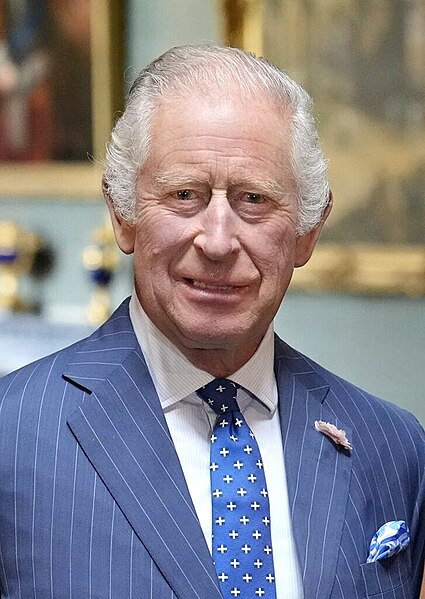Monarchy of Papua New Guinea
The monarchy of Papua New Guinea is a system of government in which a hereditary monarch is the sovereign and head of state of Papua New Guinea. The current Papua New Guinean monarch and head of state, since 8 September 2022, is King Charles III. As sovereign, he is the personal embodiment of the Papua New Guinean Crown. Although the person of the sovereign is equally shared with 14 other independent countries within the Commonwealth of Nations, each country's monarchy is separate and legally distinct. As a result, the current monarch is officially titled King of Papua New Guinea and, in this capacity, he and other members of the royal family undertake public and private functions domestically and abroad as representatives of Papua New Guinea. However, the King is the only member of the royal family with any constitutional role.
Monarchy of Papua New Guinea
King George VI's Coronation stamps issued in Papua, 1937
Queen Elizabeth II, the first monarch of Papua New Guinea, was known as Misis Kwin by the people of Papua New Guinea
William, Prince of Wales, the current heir apparent to the throne of Papua New Guinea, speaking with Governor-General Sir Bob Dadae, 2023
Papua New Guinea, officially the Independent State of Papua New Guinea, is a country in Oceania that comprises the eastern half of the island of New Guinea and its offshore islands in Melanesia. It shares its only land border with Indonesia to the west and it is directly adjacent to Australia to the south and the Solomon Islands to the east. Its capital, located along its southeastern coast, is Port Moresby. The country is the world's third largest island country, with an area of 462,840 km2 (178,700 sq mi).
Kerepunu women at the marketplace of Kalo, British New Guinea, 1885
Female gable image, Sawos people, Oceanic art in the Bishop Museum
British annexation of southeast New Guinea in 1884
Australian forces attack Japanese positions during the Battle of Buna–Gona, 7 January 1943.








